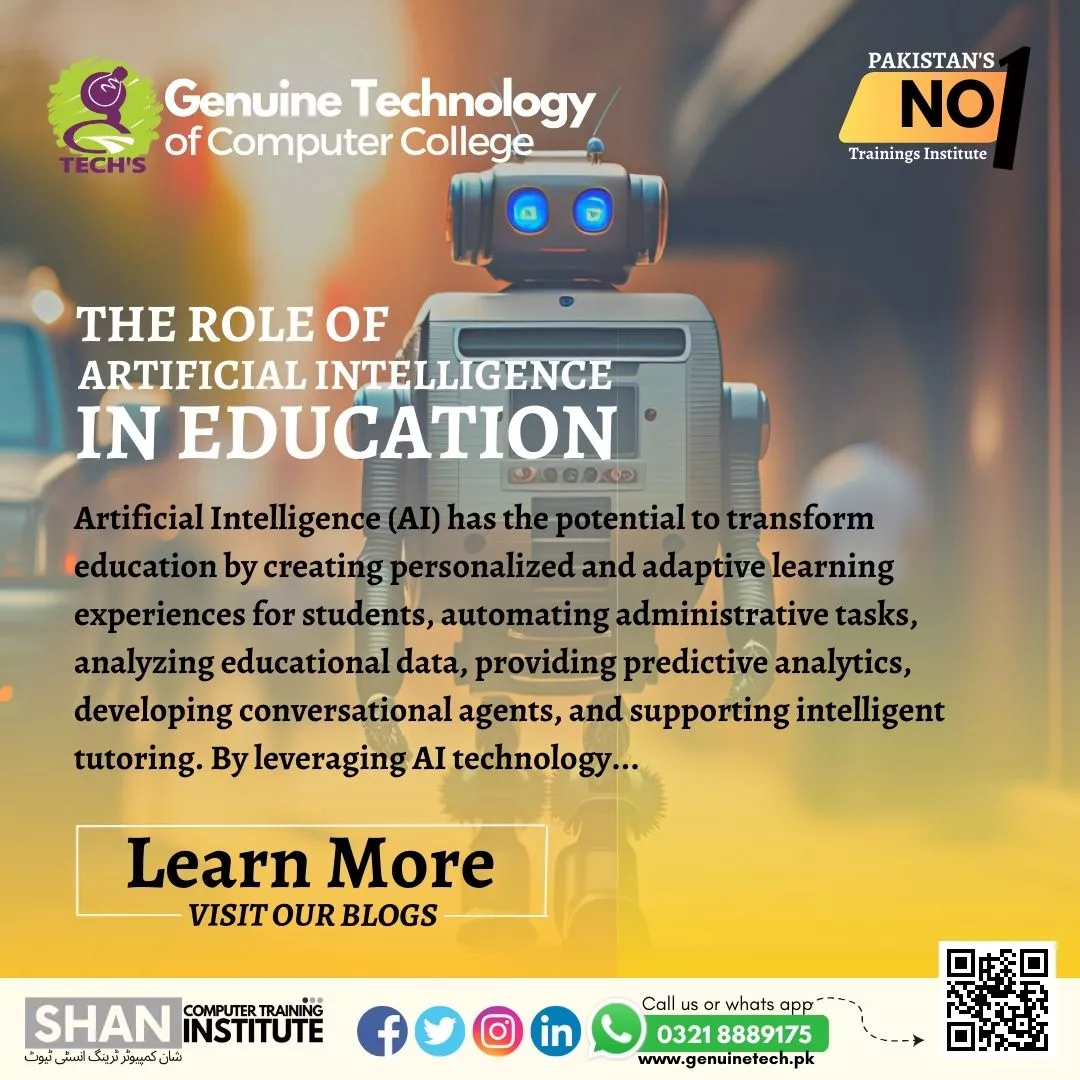The Role of Artificial Intelligence in Education
What are the roles of artificial intelligence? - Shan
Artificial Intelligence plays an important role in Education sector by providing knowledge enhancement materials AI can totally enhance the learning style for students and can create opportunities to keep them engage. With the of Artificial Intelligence in tutoring students can get extra bit of help in their tasks and assignments it may enhance their knowledge or skills. It may also help teachers to enhance their teaching methods or making assessments and grading easier here we can discuss the benefits of AI in education for students and teachers;
- Personalized Learning
- Do Tutoring and enhance it
- Improved access to education
- Assessments and grading
- Real-time feedback
- Predictive analysis
- Produce Smart Content
- Contribute to Task Automation
Genuine tech is the best Computer College for Artificial Intelligence learning by practical working you can learn each and every topic individually and become an expert in your profession the main role of artificial intelligence in education is that with the help of AI students can produce smart content on any topic which may help them in gaining knowledge or concept about that topic. It may help students to identify their strengths and weak points on which they can focus and become successful in their profession you can say it can personalize the education.
Best Role of Artificial Intelligence in Education
The best role of Artificial Intelligence AI in education is that it may keep students engage by providing enhance knowledge in educational material and in IT fields if want to start your career in web development course as a web developer this may help you a lot in seeking knowledge and in coding you can solve your complex problems where you stuck with the help of AI. So, learn the best Artificial Intelligence training course to unlock the career opportunities for you in every field.
You can visit elearningindustry.com to get more detail about Artificial Intelligence and their Role.


If you want to get further details and update about computer trainings course don't hesitate direct whatsApp chat, call or visit and follow Facebook page, Instagram and get more information LinkedIn accounts
